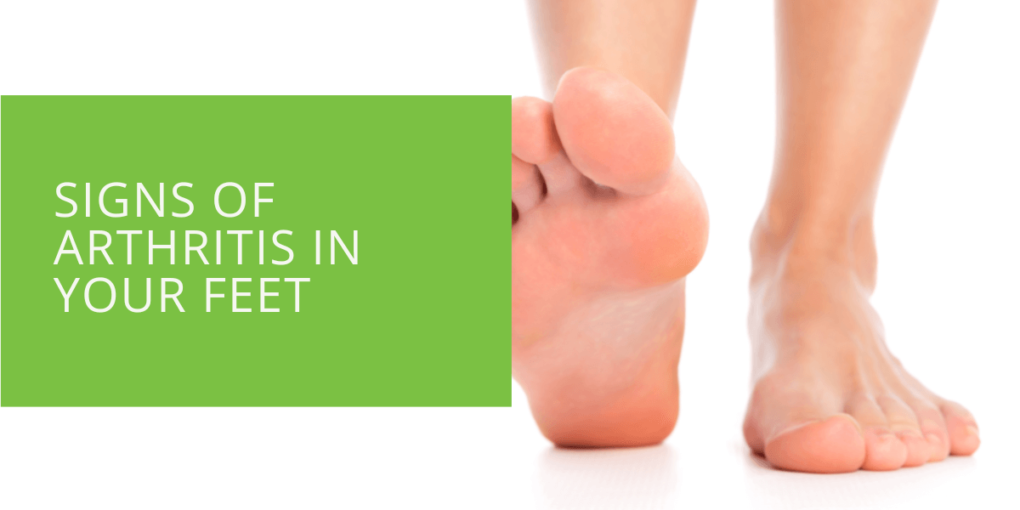Signs of Arthritis in Your Feet
Arthritis is a common condition affecting millions of people worldwide, and it can affect any joint in the body, including those in the foot and ankle. The foot and ankle have more than 30 joints, and these joints can be affected by several types of arthritis. This article will explore the signs of arthritis in your feet, the types of arthritis that can affect the foot and ankle, and the treatment options available.
What is Arthritis?
Arthritis is a condition that causes inflammation in the joints. It can affect any joint in the body, and it can cause pain, stiffness, and reduced range of motion. There are several types of arthritis, and the symptoms and treatment can vary depending on the type of arthritis.
Symptoms of Arthritis in Your Feet
The symptoms of arthritis in the foot and ankle can include pain and tenderness in the joints, stiffness and reduced range of motion, swelling and inflammation, and deformities in the joints. You may also experience warmth and redness in the affected areas. The symptoms of arthritis in the feet can cause difficulty walking or standing for long periods.

Types of Arthritis Affecting the Feet
Arthritis can affect any joint in the body, including the foot and ankle. Several types of arthritis can affect the foot and ankle, each with unique symptoms and treatment options.
Osteoarthritis
Osteoarthritis is the most common type of arthritis, and it occurs when the cartilage that cushions the joint wears down over time. The bones then rub against each other, causing pain and stiffness. Osteoarthritis can affect any joint in the foot, but it most commonly affects the big toe and the ankle. Symptoms of osteoarthritis in the foot can include pain, stiffness, tenderness, and limited range of motion. Treatment options for osteoarthritis in the foot may include medication, physical therapy, joint injections, or surgery.
Rheumatoid Arthritis
Rheumatoid arthritis is an autoimmune disorder that causes inflammation in the soft tissues around the joints, leading to pain, stiffness, and swelling. It can also cause bone erosion and joint deformity. Rheumatoid arthritis can affect any joint in the foot, but it most commonly affects the smaller joints in the toes. Symptoms of rheumatoid arthritis in the foot can include pain, stiffness, swelling, and warmth in the affected areas. Treatment options for rheumatoid arthritis in the foot may include medication, physical therapy, joint injections, or surgery.
Gout
Gout is caused by a buildup of uric acid crystals in the joints, which can cause sudden and severe pain, tenderness, and swelling in the affected areas. Gout most commonly affects the joint at the base of the big toe, but it can also affect other joints in the foot and ankle. Treatment options for gout may include medication to reduce inflammation and pain, lifestyle changes, and dietary changes to reduce uric acid levels in the body.
Psoriatic Arthritis
Psoriatic arthritis is a type of arthritis that occurs in people with psoriasis, a skin condition that causes red, scaly patches on the skin. Psoriatic arthritis can affect any joint, including the foot and ankle. Symptoms of psoriatic arthritis in the foot can include pain, stiffness, swelling, and tenderness in the affected areas. Treatment options for psoriatic arthritis may include medication, physical therapy, joint injections, or surgery.
Ankylosing Spondylitis
Ankylosing spondylitis is an inflammatory disorder that affects the spine and the joints in the feet and ankles. It can cause pain, stiffness, and a limited range of motion in the affected areas. Ankylosing spondylitis can also cause fusion of the joints, leading to permanent damage and disability. Treatment options for ankylosing spondylitis may include medication, physical therapy, joint injections, or surgery.

Risk Factors for Arthritis in the Feet
There are several risk factors for developing arthritis in the feet and ankles, including age and gender, family history and genetics, obesity, injuries, and occupation. Repetitive stress and overuse injuries can also increase the risk of developing arthritis in the foot and ankle.
Diagnosing Arthritis in Your Feet
If you are experiencing symptoms of arthritis in your feet, you should consult a podiatrist. The podiatrist will perform a physical examination and review your medical history to determine if you have arthritis. They may also perform imaging tests, such as X-rays or MRIs, to diagnose the type and severity of arthritis.
Treating Arthritis in Your Feet
The treatment options for arthritis in the foot and ankle will depend on the type and severity of arthritis. Pain management and anti-inflammatory medications, physical therapy and rehabilitation, assistive devices, orthotics, injections, and surgery may be recommended. Your podiatrist will discuss the best treatment options for your specific case.
Preventing Arthritis in Your Feet
To help prevent arthritis in your feet, it's important to maintain a healthy weight and balanced diet, engage in low-impact exercise and stretching, wear comfortable and supportive footwear, avoid repetitive stress and overuse injuries, and have regular check-ups with a podiatrist.
Conclusion
Recognizing the signs of arthritis in your feet is crucial to getting the right diagnosis and treatment. Suppose you are experiencing any symptoms of foot or ankle arthritis. In that case, it's important to consult with a podiatrist to determine the type and severity of the condition and develop a personalized treatment plan. With proper care, you can manage the symptoms of arthritis and prevent it from impacting your daily life.

